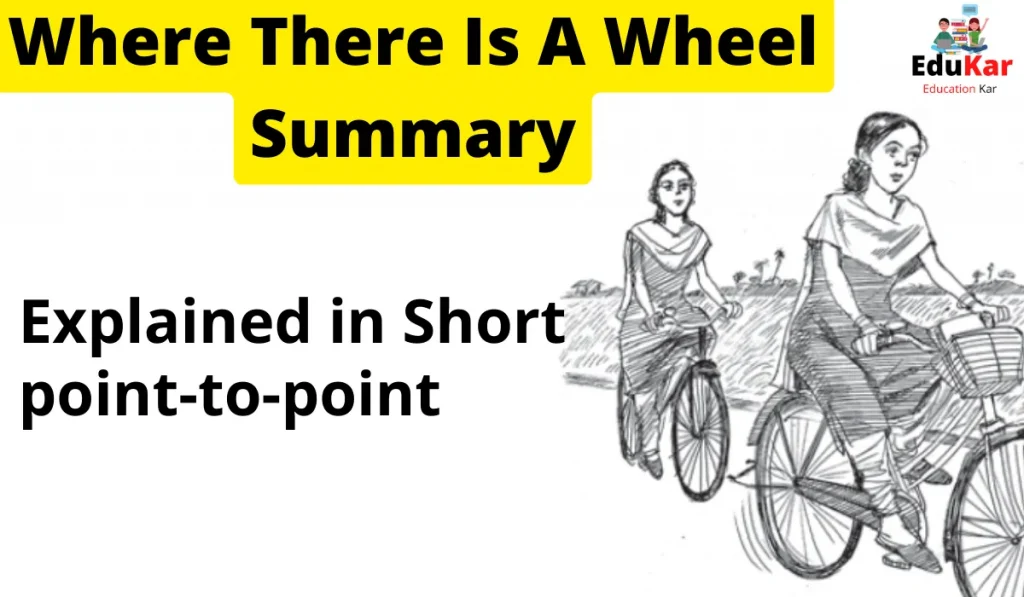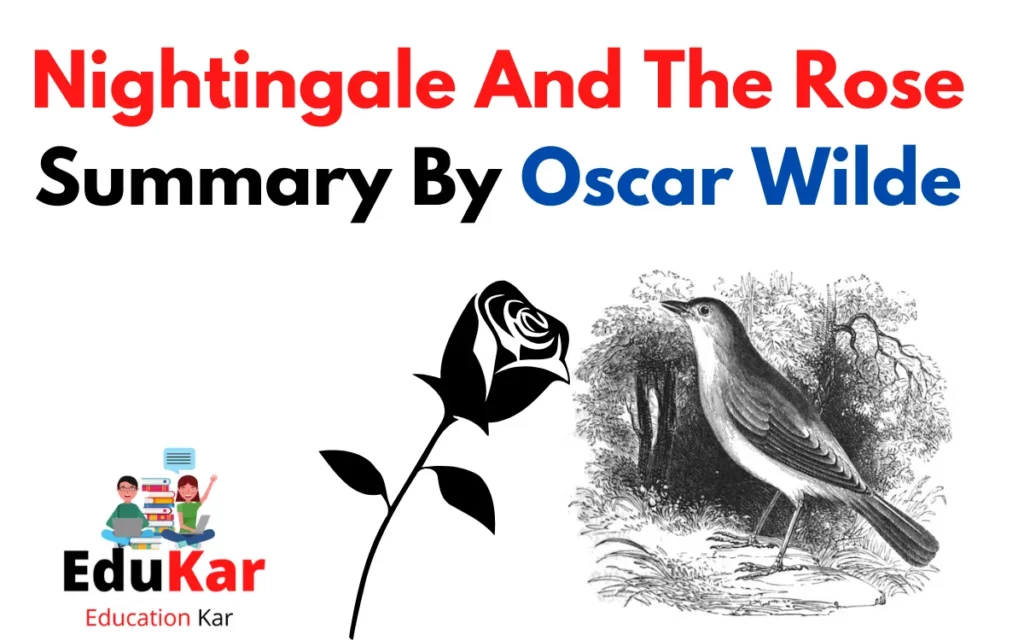Contents

| Name | Where There Is A Wheel |
| Type | Summary |
| Class | 12 |
| Board | CBSE Board |
| Author | P. Sainath |
Table Of Contents
- Characters
- Introduction
- Summary
- Women become the reason behind an enormous revolution in an exceedingly small place like Pudukkottai
- Women used Cycles for multitasks
- Cycling made women feel powerful and confident
- Conclusion
Characters
- Jameela Bibi: A teenage Muslim girl who has taken to cycling.
- Fatima: A Gymnasium teacher.
- Avakkani: Jameela & Fatima’s friend.
- N. Kannammal: Arivoli central coordinator and one amongst the pioneers of the cycling movement.
- Sheela Rani Chunkath: A well-liked district collector whose idea was to coach female activists so literacy would reach women within the interior.
- S. Kannakarajan: Holder of Ram Cycles.
- Muthu Bhaskaran: A male Arivoli campaigner.
Introduction
The essay “Where There’s a Wheel” is taken from the book ‘Everybody loves an honest drought’ written by P. Sainath a famous Indian journalist who writes columns regularly on rural, social problems post-globalization in leading journals. This essay is about a social movement through cycling within the Pudukkottai district of Tamil Nadu where over 100,000 rural women have taken to bicycling. Most of them are neo-literates who use bicycles as an emblem of independence, freedom, and mobility. Cycling has given new meaning and public identity to women, quarry laborers, agricultural workers & village health nurses. Even anganwadi and balwadi (baby sitter) workers, gem cutters & school teachers have come-together to join the bandwagon. There are gram sevikas and mid-day meal workers who have joined the new movement.
Watch Full Summary Video
Summary
Women become the reason behind an enormous revolution in an exceedingly small place like Pudukkottai
Where There’s a Wheel by P. Sainath highlights how there’s a large revolution that very easily happens in Pudukkottai, a little district in Tamil Nadu. It’s a awfull rare & unique opportunity when women, especially those not very literate become the explanation for change.
In Pudukkottai women started learning bicycling as a method of freedom. This was dole out to be a chain reaction when women felt that trying to make people around them also enjoy independence was the explanation why women were taught cycling freed from cost and voluntarily. Women who had learned cycling and had the power to coach the others were called master trainers and they would try to train the others. Fortunately, all those women who joined the literate movement were deflected towards the new cyclist movement thereby, twin advantages were in their favor. Women who joined the neo-cyclist movement were drawn towards the neo-literate movement which meant that individuals, especially women were able to gain lots of freedom and also oppose male domination.
Women used Cycles for multitasks
There were occasions when women used cycles for multitasks, i.e., especially so when women tried to buy gents’ cycle and that they used the front carrier to seat children, first they generate the carrier and hang pots of water behind. Doing so, they were ready to reduce their dependency on conveyance, sell more goods, be sure of their children, save time and money for his or her comfort.
Initially, when this movement started, there have been many men who opposed it, it had been then that the Arivoli Iyakkam movement (light of knowledge) began and plenty of volunteers of this movement would attack men and warn them after they made nasty remarks. Added to the current, the movement had individual volunteer called Muthu Bhaskaran who had written an anthem song that was sung by these and this further united their struggle.
Cycling made women feel powerful and confident
DC Sheela Rani Chunkath moved the banks to supply loans for all those women who wanted to buy bicycles. This further strengthened the ladies and instilled plenty of confidence in them. One in every of them tries to explain the journey on her bicycle similar to a plane journey because they were never exposed to any technological development.
The narrator P. Sainath who returns to Pudukkottai after a while realizes how that revolution and also the same attitude still existed in Pudukkottai and the same description is seen within the postscript written by him.
Conclusion
Women usurping cycling is as significant as their seizing literacy because cycling gives them mobility, opportunity, and freedom which together give the ladies certainty to stay on their own. At first, Sheela Rani Chunkath, a locale gatherer in 1991 proposed to arrange female literacy activists to empower them to spread education among women on the within.
Along these lines, she included mobility as a bit of the literacy drive. Be that because it may, cycling assumed a substantially more critical part than good time and autonomy to squeeze out an autonomous presence. Cycling help them with remaining joined to their youngsters and family but is financially independent. It additionally assisted the women to impart family obligations to the men’s society.















![Grandma Climbs A Tree Summary [Class 10] By Ruskin Bond Grandma Climbs A Tree Summary](https://edukar.in/wp-content/uploads/2022/09/Grandma-Climbs-A-Tree-Summary-1024x597.webp)
